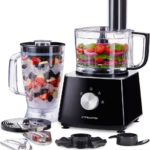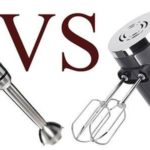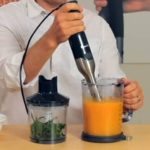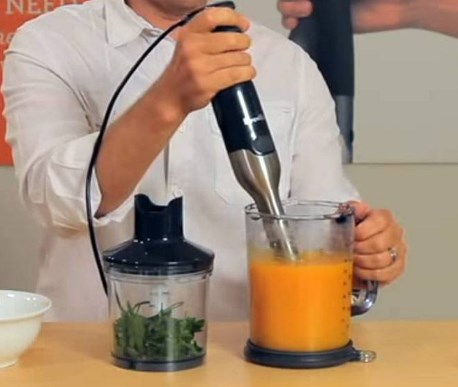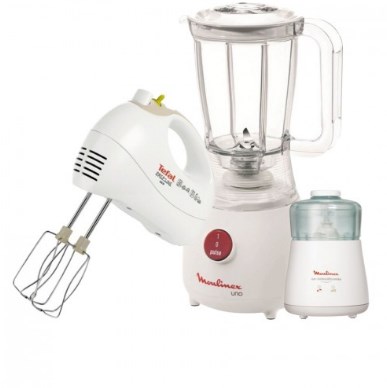The difference between a blender and a mixer and other kitchen appliances
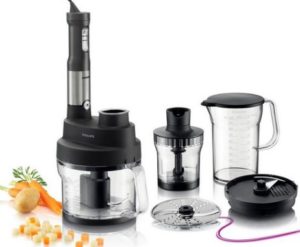 Kitchen appliances have become an active participant not only in numerous culinary battles on television, but have also become firmly established in almost every kitchen.
Kitchen appliances have become an active participant not only in numerous culinary battles on television, but have also become firmly established in almost every kitchen.
Owners of kitchen appliances confirm: mechanisms not only free you from routine work, save time and energy, but also open up new opportunities. This is probably why in advertising of household appliances for the kitchen they are called “reliable helpers.”
The variety of technology causes certain difficulties when making a specific choice.
Let's figure out what the difference between a blender and a mixer is, so that you know which assistant you need in your kitchen.
The content of the article
The difference between a blender and a mixer
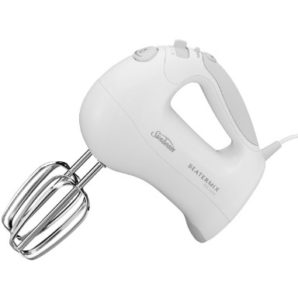 Many housewives simply say about these items: “almost the same thing.” This is not to say that they are completely wrong. After all, the main function of a blender and mixer is to mix, as indicated in their names:
Many housewives simply say about these items: “almost the same thing.” This is not to say that they are completely wrong. After all, the main function of a blender and mixer is to mix, as indicated in their names:
- Blender - Blender (from the verb “blend” - mix) - mixer.
- Mixer - Mixer (from the verb “mix” - mix) - mixer.
However, it is no coincidence that the devices are called differently. And their main difference is not in the name, but in the actions that can be performed with their help:
- Blender: mix, beat, grind, grind.
- Mixer: mix, beat.
Different functionality is provided by different components of the devices, as well as their different capabilities.
Let's take a closer look at each unit.
Blender
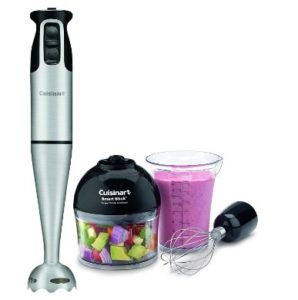 A blender is a kitchen appliance for mixing, beating, chopping, grinding vegetables, fruits, meat, as well as nuts and ice. The main component of the device, with the help of which all possible actions with products are performed, are sharply sharpened steel knives.
A blender is a kitchen appliance for mixing, beating, chopping, grinding vegetables, fruits, meat, as well as nuts and ice. The main component of the device, with the help of which all possible actions with products are performed, are sharply sharpened steel knives.
Advantages
Housewives who use a blender in their home kitchens and professional specialists note the following advantages of the device:
- Possibility of using not only boiled, but also raw vegetables.
- Speed of operations;
- Achieving homogeneity of mixtures;
Multifunctional mechanism that can do a lot:
- Cuts or shreds raw and cooked foods.
- Grind vegetables, fruits and berries to a puree.
- Will prepare a smoothie.
- Whips cream, cocktail, eggs into foam, sauce.
- Mix eggs for omelet.
- Makes minced meat, poultry or fish.
- Ice will form.
- Prepare ice cream and mayonnaise.
- Grinds herbs and spices.
- Knead the batter.
Important! When choosing a blender, carefully read the instructions. The “cutting food into cubes” and “ice crushing” functions are not available on all models.
Flaws
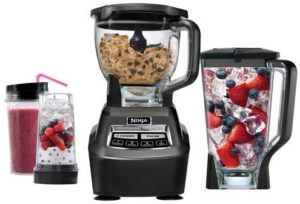 Indispensable for many, the blender still has certain disadvantages that need to be taken into account when choosing a device:
Indispensable for many, the blender still has certain disadvantages that need to be taken into account when choosing a device:
- Perhaps not everyone will like the consistency of the ice cream prepared in it, which lacks airiness and is more reminiscent of porridge.
- It will not be possible to prepare a thick dough, necessary, for example, for making delicious pies.
- Mothers of babies consider the loud operation of some devices to be a disadvantage.
Important! When buying a blender, study not only the capabilities, but also the technical characteristics of the device. This way, you can choose a unit with a noise level that does not exceed the volume of a normal conversation, as well as the ability to clean itself automatically.
Mixer
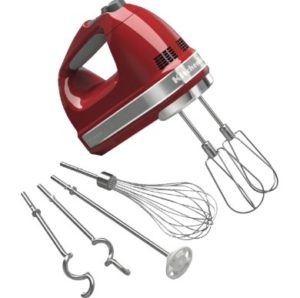 A mixer is a kitchen appliance that can be used to beat and mix foods. To perform this function efficiently, the unit is equipped with special metal whisks.
A mixer is a kitchen appliance that can be used to beat and mix foods. To perform this function efficiently, the unit is equipped with special metal whisks.
Advantages
The mixer has become a familiar tool for many housewives, and they are not going to replace it with another device. The mixer has earned such loyalty thanks to its advantages:
- A special degree of airiness and fluffiness when whipped.
- Multifunctionality:
- Mixing milk and ice cream cocktails with syrups or fruits;
- Whipping egg whites and milk cream into a thick foam;
- Preparation of soufflé, creams, mayonnaise, sauce.
- Mixing liquid (pancakes, pancakes) and thick (pies, pies, muffins) dough;
Flaws
The mixer requires preliminary special preparation of the products from the housewife; many consider this to be a disadvantage of the device:
- You cannot use raw vegetables; they can only be placed in the mixer bowl after pre-cooking.
- Does not have grinding or chopping functions.
- Does not handle thick or hard products. For example, butter can only be added in melted form.
- Uniformity of the mixture is possible when using crushed, liquid or semi-liquid components. Therefore, it requires preliminary grinding (cutting) of the components.
As you can see, the blender is more functional. This does not exclude the use of the mixer by those housewives who know exactly what dishes they prefer at home.
Those who are thinking about purchasing a blender will need some additional information.
The difference between a stationary blender and an immersion blender
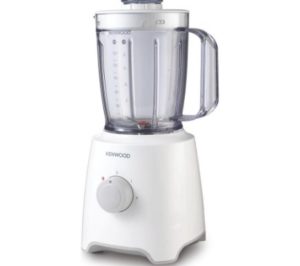 Manufacturers today offer two main types of devices: submersible and stationary. Let's take a closer look at each of them.
Manufacturers today offer two main types of devices: submersible and stationary. Let's take a closer look at each of them.
The stationary one has a working bowl in which food is chopped using fixed knives. The bowl is fixed to the body of the device. Moreover, apart from loading products, this unit does not require additional human participation in the operation process.
Called stationary, this type assumes that a permanent place will be found for it in the kitchen.
This blender easily handles volumes up to 2 liters, ideal for a large family. Its power makes it easy to handle different foods, cuts of meat, nuts and even ice.
Important! A stationary blender makes it easier to maintain cleanliness in the kitchen: the bowl, closed when grinding, completely eliminates splashing of the crushed substances. Many models of stationary blenders have a self-cleaning function.
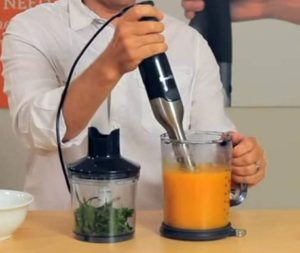 The immersion blender is compact and simple. The basis of the design is a special handle, inside of which the motor is located. Knife attachments are attached to this handle.
The immersion blender is compact and simple. The basis of the design is a special handle, inside of which the motor is located. Knife attachments are attached to this handle.
This type of blender can be put away after use and does not take up much space. But during operation you need to constantly hold it in your hands. But you can use it in any container, and turning the soup into puree is possible in the same pan where the soup was cooked.
Important! There are models of immersion blenders on sale in which you can change attachments. This expands the functionality of the device.
The difference between a blender and a chopper
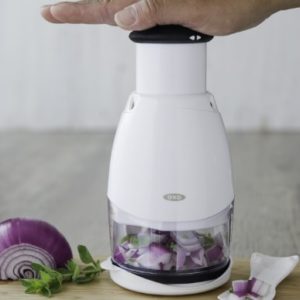 Since the blender is capable of chopping food well, buyers sometimes wonder if it can be replaced with another kitchen appliance - a chopper. To make a decision, you need to know how a blender differs from a chopper.
Since the blender is capable of chopping food well, buyers sometimes wonder if it can be replaced with another kitchen appliance - a chopper. To make a decision, you need to know how a blender differs from a chopper.
Chopper - a kitchen appliance that easily and quickly cuts and grinds food. The models of shredders are varied; manufacturers offer from simpler types to shredders with various attachments. Having such a device, you can make large and small cuts, you can chop and grate vegetables or other products.
However, the chopper will not be able to beat or mix the chopped pieces until smooth. The ability not only to chop, but also to whip - this is the main difference between a blender and a chopper.
What is the difference between a food processor and a blender?
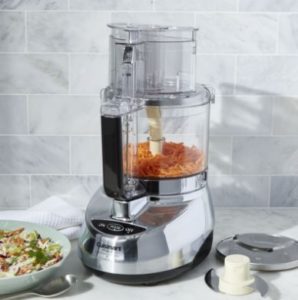 To complete your knowledge about kitchen appliances that help in cooking, you must definitely mention a food processor. This unit can be briefly described as: “Four in one.” After all, a food processor combines the functions of not only the mixer and blender we are considering. It is also complemented by the capabilities of a juicer and meat grinder. This is a really good assistant that efficiently performs the necessary tasks in the kitchen.
To complete your knowledge about kitchen appliances that help in cooking, you must definitely mention a food processor. This unit can be briefly described as: “Four in one.” After all, a food processor combines the functions of not only the mixer and blender we are considering. It is also complemented by the capabilities of a juicer and meat grinder. This is a really good assistant that efficiently performs the necessary tasks in the kitchen.
A food processor is a solid and even bulky mechanism. He will need enough space on his desk. Compared to other devices, the combine is more expensive.
Let's sum it up
Manufacturers have done the most important thing: they have provided customers with a large selection of kitchen appliances that can perform a variety of functions in the kitchen.
To make your choice and not be disappointed in it later, you need to determine:
- What actions do you want to entrust to the mechanism most often?
- If you whip a lot (dough, cream, cream, etc.), and children really love cocktails, you will get by with a mixer.
- If you need a “helper” who will not only beat well, but also free you from chopping, grating, and stirring, you simply need a multifunctional blender.
- What space in your kitchen can you devote to a new appliance?
If you want to put your blender away in the cabinet after use, take a closer look at an immersion blender. If you know where to place the unit, choose among the stylish models of stationary blenders.
And rest assured: All models of kitchen appliances are easy to learn, provide pleasure to use, and allow you to please your loved ones often and easily!

